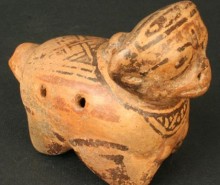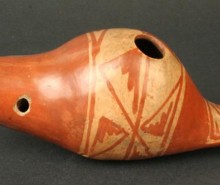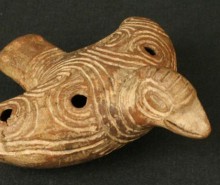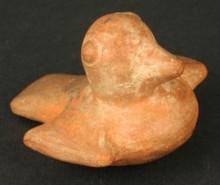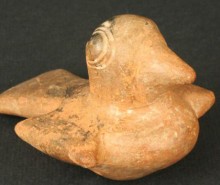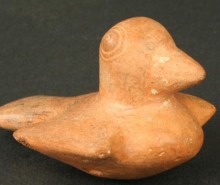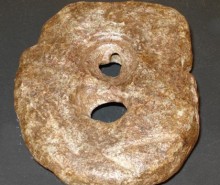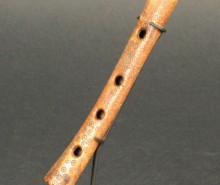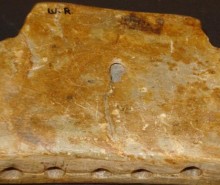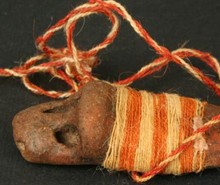Globular Flute
This ceramic globular flute was made by the Carchi culture, which inhabited modern-day Ecuador between the years 500 BCE and 500 CE.
The two ends of the instrument are extended away from the body; one ends in a tubular section, while the other is flat. There are a total of five holes: two in the widest part (V and II), placed on opposite sides, and three on the tubular extension (I, III and IV). The instrument was played using hole V as the mouthpiece. Hole II was covered with the palm of the hand, allowing glissandos to be played. The flute is decorated with three bands of geometric patterns, running around its circumference.
The interior of the flute was modeled in the form of a snail, which demanded a remarkable level of craftsmanship and commitment to the piece, as it is extremely difficult to make, but does not affect the sounds produced (which would be the same if the piece were simply hollow) or appearance (the workmanship is hidden inside). The unusual design was probably meant to evoke the symbolism of the snail shell and the spiral.
This flute can produce a number of notes: G – G# – A# – B – C# – C#(+) – F – F(+) – F#.
Dimensions: 680 mm high x 155 mm long x 680 mm wide (approx 27” x 6” x 27”).
Ver ficha de documentación organológica
Part Code: MCHAP 178





































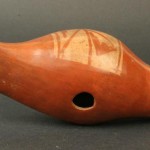

 Flauta globular
Flauta globular